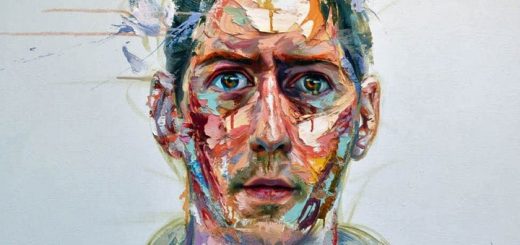Psychiatry and homosexuality. The path of liberation from prejudice
CADE ANDERSON-SMITH* article published on the British Psychological Society website (Great Britain), freely translated by Silvia Lanzi, part before
Before the edition of the DSM-Iof 1952, homosexuality was already considered a disease by many experts. In the 1940s psychoanalysts like Sandor rarely thought it was a phobic condition. At the time of the DSM-I homosexuality had been pathologized and included as "Sociopathic personality disorder".
Despite what we could see as an apparent hostility by the psychiatric community towards homosexuals, many homosexual men and women welcomed this diagnostic label. Psychiatry had changed its point of view on homosexuality: from unnatural and criminal perversion to real disease.
Many thought would be better to be considered sick rather than criminals, a position married by many of the first "homophilic" groups. Born in 1950, the Mattachine Society, a male majority group, hosted conferences of eminent psychiatrists of the caliber of Albert Ellis, supporter of the idea that homosexuality was a phobic condition. In addition, the Mattachines willingly published, on The Mattachine Review, their periodical, many articles to support those positions.
Even the Daughters of Bilitis, a pro-hesbic group founded in 1955, had in its statute the goal of sponsoring discussions with psychiatrists and other professionals.
For many gays and lesbians, the presence of a diagnostic label was important, for reasons that went beyond the simple change in the point of view that society had on homosexuality. If their orientation was a disease, then there could have been a "cure". Conversion therapies were popular between many psychiatrists and homosexuals concerned by their orientation. Psychiatrists like Charles W. Socarides, strongly critical on the removal of homosexuality from DSM, claimed to have "treated" it in numerous individuals. Conversion therapies included the adverse ones and the more traditional psychotherapies.
"We are the true authorities on homosexuality"
During the 1950s, however, consensus began to diminish. Both for the Daughters of Bilitis and for the Mattachine Society, with the publication of Homosexuality: in Disease or a Way of Life From 1957, the psychoanalyst Edmund Bergler had gone too far.
Both organizations harshly criticized Bergler's conception of homosexuality as a disease. This was due in part to the extremism of his positions, but also to the change of perspective of many activists. With the new categorization of homosexuality such as "Paraphilia" of DSM-II, Published in 1968, psychiatry became a key goal for many homosexual activists, such as Frank Kameny and Barbara Gittings.
Kameny began to be an activist after being dismissed by the US army for his sexuality in 1957. Otherwise from the first homophile groups, for Kameny it was not enough to obtain equality only with dialogue, and encouraged protests, pickets and leaflets against those organizations and institutions that worked to oppress the homosexual community, which for Kameny were mainly psychiatry and APA (Association of American Psychiatrists).
According to him, the definitive victory of the homosexual rights movement consisted in removing the diagnostic label of homosexuality and subtracting any authority on homosexuality from psychiatry to return it to the homosexual community. Kameny summarized her idea: "We are the true authority on homosexuality, whether they accept it or not".
Also Barbara Gittings, editor of the Daughters of Bilitis periodical The Ladder and founder of her New York headquarters, she believed that strong activism was necessary. Unlike Kameny, however, he opposed the psychiatric movement, this until he participated in a 1963 conference hosted by the East Coast Homophile Organization (homophile organization of the eastern coast). As on many other occasions, Dr. Ellis had been invited to speak, who spoke of his belief of taking care of homosexuality.
After him, Kameny spoke, who used the opportunity granted to him to refute Ellis' ideas and suggest that there were no valid reasons to classify homosexuality as a disease: in fact, the research of Evelyn Hooker and Alfred Kinsey supported opposite conclusions. Hooker's work suggested that homosexual men were clinically indistinguishable from heterosexual ones, while the numerous interviews of Kinsey with men and women established that the homoerotic acts were more common than it once thought.
Gittings remembered later: "I changed my mind until Frank Kameny arrived and simply said [...] that homosexuality was not a disease". This represented an important ideological change for an activist with a strong influence within the movement of homosexual rights.
Kameny and Gittings have contributed to placing psychiatry in the sights of the new and more active organizations for homosexual rights.
During the 1960s, psychiatrists had to face more hostile environments: in fact, they saw people who only a few years earlier were happy to listen to them to talk about the pathology of homosexual attraction, stuck outside their offices, disturb their conferences and fly during their interventions. The Motes of Stonewall of 1969 favored this activism.
In 1970 the American Psychiatric Association decided to keep its annual conference in San Francisco, one of the centers of activism for homosexual rights. For activists, of course, it was an opportunity that could not be ignored. The activists staken out of the palace where the conference was held, while others interrupted it and confronted those psychiatrists who spread the concept of homosexuality as a disease.
Although the APA had allowed Kameny and Gittings in 1971 to keep a brief intervention, that year there were still protests, and this time the activists attacked the podium of the inauguration ceremony.
Starting from the 1972 conference, the APA understood that the only way to avoid further interruptions would have been to grant more space to homosexual activists. One was granted to them booth in hall of the conference and an intervention of activists and psychiatrists together was foreseen.
* Cade Anderson-Smith is a first year student at the University of London in psychology and clinical psychology.
Original text: The Lasting Legacy of Dr Anonymous






